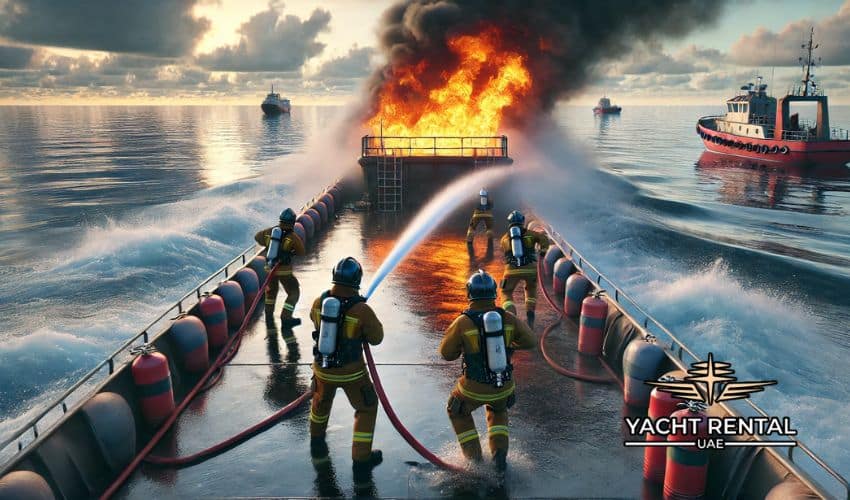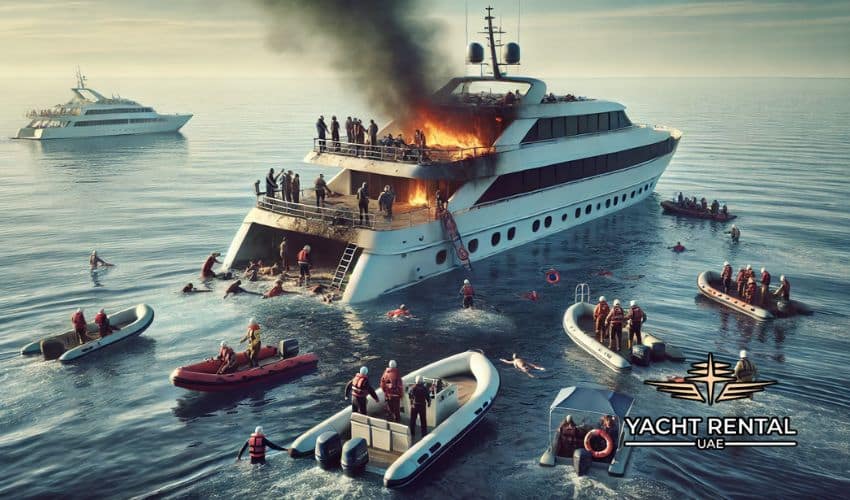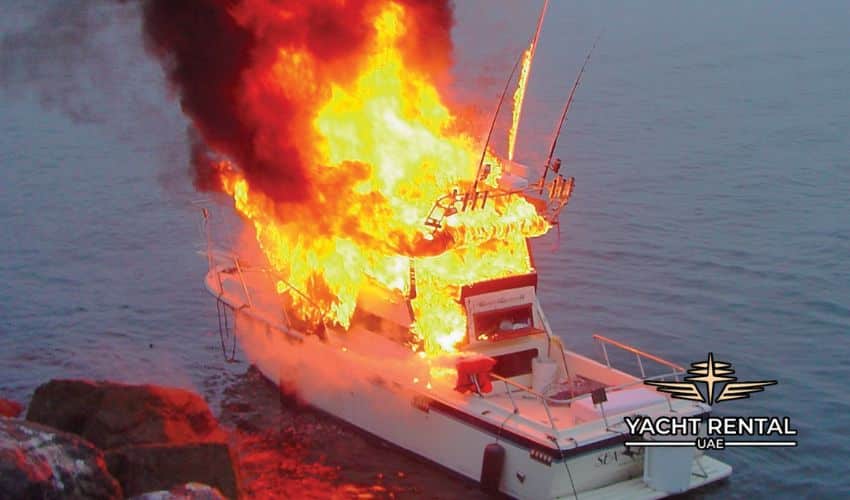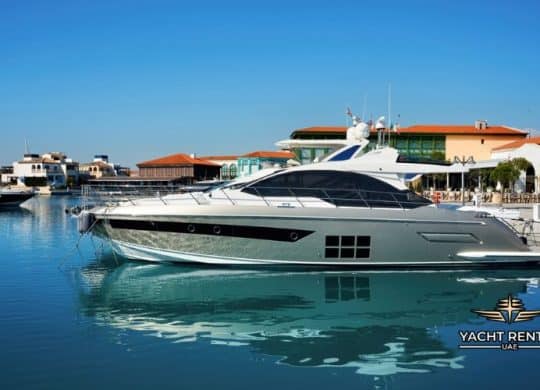Immediate Response to Fire in Front of Your Boat
Immediate response is important to ensure the safety of everyone on board. The size of a yacht or boat can influence the spread of fire, but the safety principles remain consistent across all vessels. Here is what you can do immediately if a fire breaks out in the front of your boat.
- Alert Passengers
- Put on Life Jackets
- Move to the Stern
Alert Passengers
In the event of a fire at the fore of your vessel, it is imperative to alert all passengers without delay. Use clear, loud, and calm instructions to inform everyone about the situation. Establish a leader or point person to coordinate the response efforts, ensuring that panic is minimized and everyone understands the severity of the problem.
Put on Life Jackets
All passengers must wear life jackets before attempting to tackle the fire. This precautionary measure is non-negotiable. Life jackets provide buoyancy and protection during an evacuation, making them a top priority for personal safety.
Move to the Stern
As the fire rages at the front, moving all passengers to the stern is strategic. This action serves multiple purposes: it puts distance between the passengers and the fire, helps to maintain the boat’s balance by distributing weight evenly, and prepares everyone for a potential evacuation. The stern of the boat is also typically where life rafts or emergency equipment are stored, making it the logical gathering point in such emergencies.
Control the Fire

In the critical moments following the detection of a fire on your boat, controlling the blaze becomes the top priority. The actions you take can prevent a small fire from becoming a disaster. Follow the strategies below to control the fire.
- Shut Off Fuel Sources
- Use Fire Extinguisher Guidelines
Shut Off Fuel Sources
The first step in controlling a fire is to eliminate its fuel source. For a boat fire, this means immediately turning off the engine and shutting down the fuel supply. Here is how to do it:
- Engine Shutdown: Locate the ignition and turn it off. If your boat has a key, remove it to prevent accidental restarts.
- Fuel Supply Cut-off: Find the fuel supply valve and turn it to the closed position. This will stop the fuel flow, which could feed the fire.
These actions help to starve the fire of fuel, potentially slowing its spread and giving you more time to extinguish it.
Use Fire Extinguisher Guidelines for Boat Fire
Every boat should be equipped with fire extinguishers, and knowing how to use them effectively is essential. The best place to store fire extinguisher on a boat is in accessible locations near potential fire hazards but not so close that a fire could block access to them. Here are the steps to use a fire extinguisher correctly:
- P.A.S.S. Technique: Pull the pin. Next, make sure you properly aim at the base of the fire. Now, squeeze the handle and Sweep side to side.
- Types of Extinguishers: Use a marine-rated extinguisher suitable for Class B fires (flammable liquids) and Class C fires (electrical equipment).
Evacuation Procedures

In the dire event that a blaze engulfs the bow of your vessel, knowing when to evacuate and how to effectively signal for help can be lifesaving. The decision to abandon the ship is never taken lightly but must be considered if the situation escalates beyond control.
So When To Evacuate?
The decision to evacuate depends on a thorough assessment of the fire’s intensity, spread, and potential for extinguishment. It is time to evacuate if the fire cannot be contained and poses an immediate threat to life. Important indicators include:
- Uncontrollable Spread: If the fire has engulfed a significant portion of the vessel and is not responding to extinguishing efforts.
- Smoke Inhalation Risk: Thick smoke can incapacitate passengers, making evacuation necessary.
- Heat Intensity: If the heat from the fire becomes unbearable, even at a distance, it’s a clear sign to leave the boat.
Signal For Help
Once the decision to evacuate has been made, signaling for help is critical. Here are the best practices:
- Use of Flares: Launch flares to attract attention from nearby vessels or shore-based observers.
- VHF Radio: Send a mayday call over VHF Channel, providing your location and nature of the emergency.
- EPIRBs and Personal Locators: Activate an Emergency Position Indicating Radio Beacon (EPIRB) or personal locator beacon for satellite-based alerts.
Aftermath and Reporting

Surviving a fire on your boat is only the beginning. Once you are at a safe distance, the post-evacuation actions you take and how you report the incident are critical steps in the aftermath of such an emergency. After evacuating and reaching a safe distance from the fire, it is important to:
- Account for All Passengers: Ensure all individuals are present and attend to any injuries.
- Stay Together: Keep the group together to increase visibility and the chances of rescue.
- Keep Warm: Use blankets or extra clothing to maintain body heat if in a cooler environment.
- Stay Hydrated: Consume water if available, but ration supplies if rescue is delayed.
Once rescued, reporting the incident is a legal requirement and a responsibility of the boating community.
- Contact Authorities: Inform the Coast Guard or local maritime authority about the incident.
- Provide Details: Give a full account of the event, including the cause of the fire if known.
- Insurance Notification: Report the incident to your insurance company for coverage assessment.
- Follow-Up: Cooperate with any investigations and provide additional information if requested.
Prevention and Preparedness
Regular maintenance, proper fire safety equipment, and training are paramount to mitigate the risk of a fire breaking out at the front of your boat or anywhere else onboard. Routine maintenance is the first line of defense against onboard fires. This includes:
- Engine and Fuel System Checks: Regular inspections can identify potential hazards like fuel leaks or electrical issues.
- Cleanliness: Keeping engine spaces clean prevents the accumulation of flammable materials.
- Ventilation: Proper ventilation systems help to remove flammable gases.
Equipping your boat with the right fire safety tools is critical to preparedness. This includes:
- Fire Extinguishers: Ensure they are marine-rated and accessible, with clear instructions for use.
- Smoke Detectors: Install in all enclosed spaces to provide early warning.
- Fire Blankets: These are useful for smothering small fires or wrapping around a person in an emergency.




